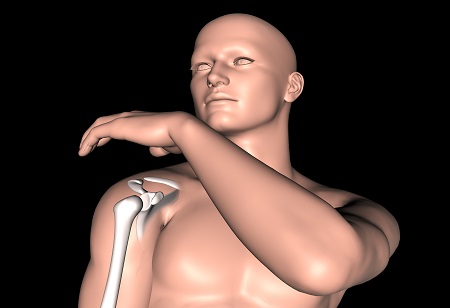India Pharma Outlook Team | Monday, 26 February 2024

Zimmer Biomet Holdings, Inc. has announced that the US Food and Drug Administration (FDA) has cleared the ROSA Shoulder System for robotic-assisted shoulder replacement surgery. This makes ROSA Shoulder the world's first robotic surgery system for shoulder replacement and the fourth application for the company's comprehensive ROSA Robotics portfolio, which includes the ROSA Knee System for total knee arthroplasty and ROSA Hip System for total hip replacement.
ROSA Shoulder is designed to allow surgeons to execute a total shoulder replacement using anatomic or reverse techniques and to enable precise placement for improved outcomes. ROSA Shoulder is one of the only systems that can reproduce humeral head resectioning and ease instrument insertion into incisions by requiring no pin in the center of the glenoid during procedures.
ROSA Shoulder is a significant addition to Zimmer Biomet's innovative shoulder implant portfolio, which includes the Identity Shoulder System. It joins ZBEdge Dynamic Intelligence, which has the power to enhance the company's cutting-edge digital technologies, robotics and implant solutions.
"We are proud and excited to be the first company in the world to deliver a robotic surgical assistant for anatomic and reverse shoulder replacement surgery," said Ivan Tornos, president and chief executive officer at Zimmer Biomet. "ROSA Shoulder represents a novel advancement intended to help surgeons leverage the power of robotics and data analytics to perform highly complex shoulder procedures accurately and efficiently."
Like all ROSA Robotics applications, ROSA Shoulder supports data-informed physician decision-making based on a patient's unique anatomy. Pre-operatively, ROSA Shoulder integrates with the newly released Signature ONE Surgical Planning System 2.0, which uses a 3-D image-based approach to visualization, surgical planning and patient-specific guide creation. During the surgery, the platform provides surgeons with real-time, intra-operative data to help them control, execute and validate personalized glenoid and humeral placement plans to reduce patient complications.
"One of the challenging aspects of performing a shoulder replacement is accurate glenoid and humeral placement, which is a critical factor for post-operative function and long-term implant survival," said John W. Sperling, MD, MBA, Professor of Orthopedic Surgery at Mayo Clinic. "This innovative approach is designed to allow surgeons to virtually walk through a procedure before making any resections, and then receive live feedback and the ability to control glenoid ream depth and intra-operatively validate cut resections during the procedure."